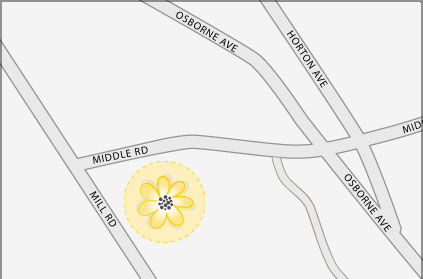Riverhead’s proposed assisted living zoning could feature affordable component

The proposed assisted living zoning Riverhead Town Board members are developing will now differentiate between affordable and market-rate assisted living projects; with affordable projects qualifying for additional units per acre, and developers of market rate facilities needing to buy farmland development rights in order to receive permission for additional units.
The Town Board discussed the matter at its work session Thursday.
Present at the work session was Ronald DeVito of Concordia Senior Communities, which has been planning a 200-unit assisted living project on 25 acres north of Home Depot on Mill Road. That project cannot be built under the current zoning, which doesn’t permit assisted living anywhere in town, officials say.
The draft version of that plan on Concordia’s web site shows 105 independent living homes, for residents who do not need medical care or assistance, along with 12 special needs assisted living units and 12 enhanced assisted living units.
Since a Feb. 7 hearing on an earlier version of the proposed assisted living zoning, town planning director Rick Hanley said a new version has been drawn up that would now require the homes receiving the increased building density proposed in the earlier version to have an affordable housing component, meaning occupants would have to be within 110 percent of the county’s median family income.
That number would put the maximum annual household income for residents in an affordable assisted living retirement community or continuing care retirement community at about $96,000, Mr. Hanley said.
“That’s a lot of money,” Councilwoman Jodi Giglio said. “I don’t know any seniors that are making $96,00 a year.”
The residents in the proposed assisted living projects would also have to be 55 years old or more, and the independent units could be no larger than 1,200 square feet, according to the proposal discussed Thursday.
“So what is the rent for a 1,200 square foot independent living unit?” Supervisor Sean Walter asked Mr. DeVito.
Assuming no medical services are needed, that rent would be about $1,200 per month, he said. But the rent for residents who require extensive care, such as Alzheimer’s patients, is often as high as $6,000 per month, he said, adding that he will try to keep it around $5,200 per month.
The independent living units could be built at a density of four units per acre if they meet the affordable criteria, and two units per acre if they don’t, under the new proposal.
Assisted living units could be built at a density of eight units per acres if affordable, and four units per acre if not.
“It has to be affordable to get this density,” Mr. Hanley said.
The independent retirement homes, which require no medical services, could constitute no more than 40 percent of the overall project, according to the proposal.
“The reason I want the independent units combined with the assisted living is because the operating margins in the independent help me keep down the price of the assisted living units,” Mr DeVito said Thursday. The higher density also subsidizes the more expensive assisted living units, he has said in the past.
Under the town’s existing transfer of development rights program, which allows developers to increase how much development they can build in certain areas if they purchase the development rights off farmland that the town is aiming to preserve, generally gives builders the right to build three times the permitted density if TDR is used, Mr. Hanley said.
The Long Island Farm Bureau has opposed the density allowed in the earlier proposals for the assisted living zone, saying it offsets the need for farmland development right purchases. The town plans to get input from the LIFB on the revised version of the proposal as well, Councilman George Gabrielsen said.
The Town Board has not set a date for a new hearing on the revised assisted living program, but will likely do so at the March 20 Town Board meeting, officials said Thursday.








